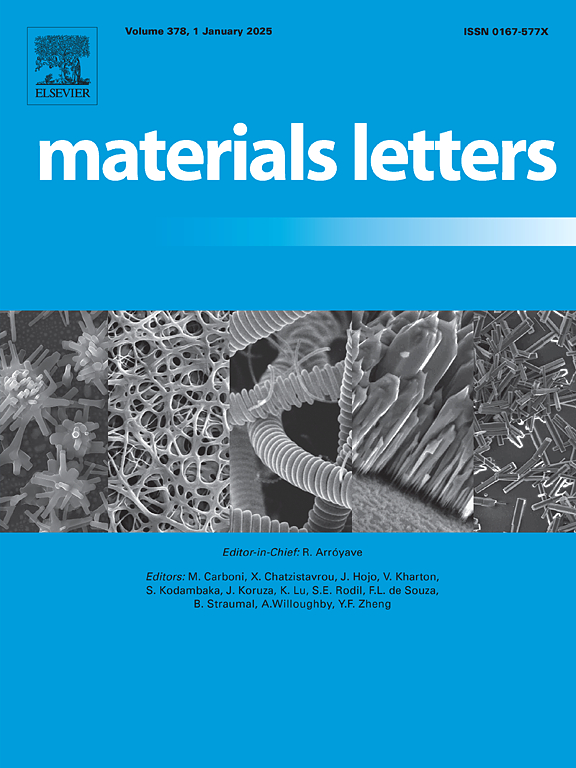Precipitation of α2 phase, β decomposition-induced HCP-FCC phase transformation, and formation of abnormal nanotwins in an additively manufactured multicomponent α + β titanium alloy
IF 2.7
4区 材料科学
Q3 MATERIALS SCIENCE, MULTIDISCIPLINARY
引用次数: 0
Abstract
An α + β titanium alloy with 9 components was processed by laser directed energy deposition (LDED). Such a complex alloying strategy led to the precipitation of coherent α2 (Ti3Al) particles, phase transformation from hexagonal close packed (HCP) to face centered cubic (FCC), and formation of abnormal nanotwins in α lamellae. Specifically, the FCC nano laths and abnormal nanotwins were formed due to the shearing of the prismatic plane of the α phase during β decomposition. To the best knowledge of authors, such phenomena were found in α + β titanium alloys for the first time. All of these fine microstructures in α lamellae are coherent, so the restriction of dislocation movement by coherent interface and twin boundary is critical strengthening mechanism for the development of α + β titanium alloys.
求助全文
约1分钟内获得全文
求助全文
来源期刊

Materials Letters
工程技术-材料科学:综合
CiteScore
5.60
自引率
3.30%
发文量
1948
审稿时长
50 days
期刊介绍:
Materials Letters has an open access mirror journal Materials Letters: X, sharing the same aims and scope, editorial team, submission system and rigorous peer review.
Materials Letters is dedicated to publishing novel, cutting edge reports of broad interest to the materials community. The journal provides a forum for materials scientists and engineers, physicists, and chemists to rapidly communicate on the most important topics in the field of materials.
Contributions include, but are not limited to, a variety of topics such as:
• Materials - Metals and alloys, amorphous solids, ceramics, composites, polymers, semiconductors
• Applications - Structural, opto-electronic, magnetic, medical, MEMS, sensors, smart
• Characterization - Analytical, microscopy, scanning probes, nanoscopic, optical, electrical, magnetic, acoustic, spectroscopic, diffraction
• Novel Materials - Micro and nanostructures (nanowires, nanotubes, nanoparticles), nanocomposites, thin films, superlattices, quantum dots.
• Processing - Crystal growth, thin film processing, sol-gel processing, mechanical processing, assembly, nanocrystalline processing.
• Properties - Mechanical, magnetic, optical, electrical, ferroelectric, thermal, interfacial, transport, thermodynamic
• Synthesis - Quenching, solid state, solidification, solution synthesis, vapor deposition, high pressure, explosive
 求助内容:
求助内容: 应助结果提醒方式:
应助结果提醒方式:


